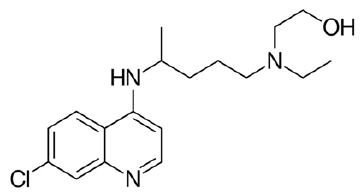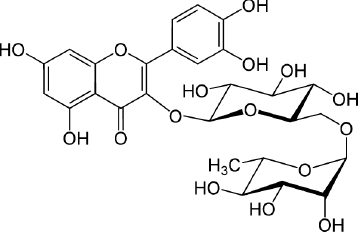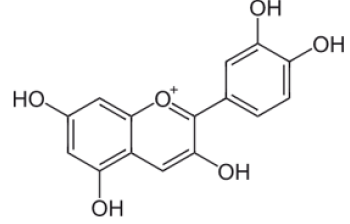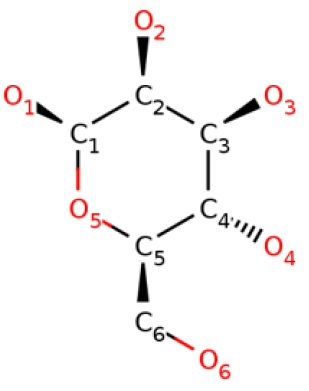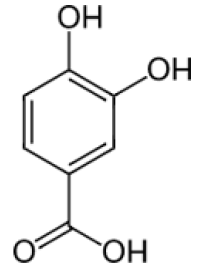Abstract
Objective: Combine the CRISPR-Cas13 technique with the action of the medicinal plant Hibiscus sabdariffa for the treatment against COVID-19.
Method: Gene and protein sequences obtained from GeneBank of the spike protein of the virus that binds the AE2 receptor in the target cell were used. These were analyzed with the MEGA software. The chemical structures obtained from Hibiscus sabdariffa were also studied and compared with the structure of hydroxychloroquine and compounds that stimulate the immune response such as Acetylsalicylic acid. These obtained in PubChem.
Results: Amino acid residues that serve to bind the spike protein to the AE2 receptor were identified and modified by changing the codons corresponding to these amino acids by stop codons in the spike protein genome. The chemical structures of Hibiscus sabdariffa were similar to hydroxychloroquine and Acetylsalicylic acid.
Conclusion: When the two technologies are combined, the virus could be stopped before entering the cell, due to the agonist effect of the Hibiscus sabdariffa chemical compounds, and in addition, the genome of the spike protein can be modified inside the target cell so that the virus runs out of infectious potential for other cells.
Keywords: COVID-19; CRISPR-Cas13; Spike Gene; Hibiscus sabdariffa; Spike Protein; Sequence
Introduction
SARS-CoV-2 (COVID-19) is one of the infectious agents causing the disease Severe Acute Respiratory Syndrome. SARS-CoV-2 is an RNA virus of which SARS and MERS are also part [1,2]. It is a virus that infects the person when it binds to the receptor for the angiotensinconverting enzyme 2 (ACE2) and thus penetrates its target cell. This receptor binds to the enzyme. It is involved in a series of effects such as: regulation of arterial hypertension, diabetic nephropathy, and congestive heart failure [3]. This receptor is ubiquitous in many cells (AT2 lung cells, respiratory epithelial cells, myocardial cells, cells of the esophagus and ileum, cells of the proximal tube of the kidney, and urothelial cells of the bladder) [4]. This may be one of the causes of its high spread in the body. For this purpose, the virus uses its Surface Glycoprotein S [3]. The virus could use the ACE2 pathway to enter cells to enhance their infectivity. The immune response against the virus is characterized by a strong activation of the immune system that produces a high production of proinflammatory cytokines called “cytokine storm”, which could lead to viral sepsis and inflammation with lung injury characterized by marked leukopenia, failure respiratory, shock, organ failure and the possibility of death [5-7]. In this innate immune response, we can see the mannose-binding lectin receptors (MBL) to which some viral antigens bind, which when they carry out their binding, can induce complement activation, increased phagocytosis, as well as activation of the intracellular antiviral machinery of the proteasome.
Although these responses are beneficial in counteracting viral infections, if they override and stimulate uncontrolled responses by the immune system, they can cause septic shock and lead to widespread organ damage and death, a situation that is currently occurring in patients who die from COVID-19 infection [8]. SARSCoV- 2 is an RNA virus, therefore the best technology to attack it inside the cell is when it deposits its genetic material in the cell. The appropriate technique presented is CRISPR-Cas13, which attacks RNA and not DNA. CRISPR-13 technology has been successfully tested in vitro and in vivo and shows promise, since not only does it have the possibility of reducing the viral load in hamsters, but it may also be the only technique to avoid mutations and new strains. The possibility of using this technique should be explored either in vivo directly in the form of nebulization or ex vivo with the introduction of respiratory tract cells infected with SARS-CoV 2 [9-11]. On the other hand, medicinal plants have been used as alternative medicine for several centuries and before the revolution in drug synthesis, it was the treatment of choice in various pathologies [12]. The use of several conventional therapies for the COVID-19 coronavirus, such as ACE2 [13] receptor agonists and also hydroxychloroquine, is currently being contemplated with different results depending on the type of patient [14,15].
Although hydroxychloroquine was suspended by the WHO, in this work it was taken as a model to test Hibiscus sabdariffa compounds by molecular docking, as previously appreciated in its mechanism of action and considering the recommendations in Pandey, et al. [16-18]. There is a medicinal alternative derived from a plant that has been documented in the past. Hibiscus sabdariffa, tropical plant that receives several generic names Flor de Jamaica, Roselle, among others [19,20]. This plant has been the subject of phytochemical studies that have led to several studies on its medicinal properties [21]. It has been found that they have the ability to act on the AEC2 receptor with agonist properties [20,22]. This study intends to give a suggestion for treatment against the SARS-CoV-2 virus, combining the possibility of mutating the virus’s spike protein gene, which serves as a gateway to the cell using the CRISPR-Cas13 method and the agonist response with the AE2 receptor of the medicinal plant Hibiscus sabdariffa.
Methods
This study was based on a systematic review of updated information on COVID-19, in the databases PubMed, Google Scholar, Scopus, GeneBank, NIH. With descriptors COVID-19, CRISPR-Cas13, Gen SARS-CoV-2, Hibiscus sabdariffa. The gene sequence and spike protein sequences for SARS-CoV-2 were downloaded into FASTA from GeneBank NCBI Reference Sequence: NC_045512.2. To determine the binding points of the virus to the AE2 receptor, the sequence reported by Walls A, et al. in Cell [23] was taken as a model. With the MEGA program [24] the amino acids of the protein involved in binding to the receptor and its counterpart in the virus genome were identified. The codons for these amino acids were changed by stop codons. For the analysis of the effect of the medicinal plant Hibiscus sabdariffa, the structures obtained from the phytochemical study made by Castañeda R, et al. [21] and the analysis of these structures found by Barral M [25] were taken as a model. These were compared with the structure of Hydroxychloroquine [26], found in the PubChem database, as well as the compounds Mannose [27], Rutin [28], Anthocyanin Flavylium [29], Protocatechuic acid [30] and Acetylsalicylic acid [31]. Starting from the agonist effect on the AE2 receptor found in Herrera-Arellano, A. 2007 [20]. For comparison, a molecular docking was carried out between hydroxychloroquine and rutin with the ACE2 receptor and protocatechuic acid and acetyl salicylic acid with the COX 2 cyclooxygenase protein. The SwissDock online program was used [32].
Results
Based on this, here is proposed the following strategy using CRISPR technology: This is the sequence of the Virus genome downloaded to FASTA from GeneBank: NCBI Reference Sequence: NC_045512.2. corresponding to the Surface Glycoprotein S (Spike) del virus SARS-CoV-2.
ACTGGAAAGATTGCTGATTATAATTATAAATTAC - CAGATGATTTTACAGGCTGCGTTATAGCTTGGAATTCTAACAATCTTGATTCTAAGGTTGGTGGTAATTATAATTACCTGTATAGATTGTTTAGGAAGTCTAATCTCAAACCTTTT GAGAGAGATATTTCAACTGAAATCTATCAGGCCGGTAGCACACCTTGTAATGGTGTTGAAGGTTTTAATTGTTAC TTTCCTTTACAATCATATGGTTTCCAACCCACTAATGGTGTTGGTTAC
This is the sequence of the Virus proteins, downloaded in FASTA from GeneBank: NCBI Reference Sequence: NC_045512.2. This is the sequence of the Virus protein that corresponds to the translation of the spike protein gene
TGKIADYNYKLPDDFTGCVIAWNSNNLDSKVGGNYNYLYRLFRKSNLKPFERDISTEIYQAGSTPCNGVEGFNCY FPLQSYGFQPTNGVGY
According to Walls, et al. [23]: The protein sequence has amino acid residues that are those that bind to the ACE2 receptor in the target cells. These residues are seen here in the gene and spike protein. Marked in the following sequences in red [23]. Compared and modified using MEGA software.
Spike gene sequence ACTGGAAAGATTGCTGATTATAATTATAAATTACCAGATGATTTTACAGGCTGCGTTATAGCTTGGAATTCTAAC AATCTTGATTCTAAGGTTGGTGGTAATTATAATTACCTGTATAGATTGTTTAGGAAGTCTAATCTCAAACCTTTT GAGAGAGATATTTCAACTGAAATCTATCAGGCCGGTAGCACACCTTGTAATGGTGTTGAAGGTTTTAATTGTTAC TTTCCTTTACAATCATATGGTTTCCAACCCACTAATGGTGTTGGTTAC
Spike protein sequence TGKIADYNYKLPDDFTGCVIAWNSNNLDSKVGGNYNYLYRLFRKSNLKPFERDISTEIYQAGSTPCNGVEGFNCY FPLQSYGFQPTNGVGY
The system proposed in this work is eliminate with CRISPRCas13 the sequence of the virus surface glycoprotein S genome (Spike) inside the cell and then be replaced by the following sequence with all the binding sites changed by stop codons (It was changed the T for U to convert it into RNA from original sequence):
UGAGGAAAGAUUGCUGAUUAUAAUUAUAAAUUACCAGAUGAUUUUACAGGCUGCGUUAUAGCUUGGAAUUCUUGAAAUCUUGAUUCUAAGGUUGGUGGUAAUUGAAAUUACCUGUGAAGAUGAUUU AGGAAGUCUAAUCUCAAACCUUUUGAGAGAGAUAUUUCAACUGAAAUCUAUCAGGCCGGUAGCACACCUUGUAAUGGUGUUGAAGGUUGAUGAUGUUGAUUUCCUUUAUGAUCAUAUGGUUUCUGA CCCUGAUGAUGAGUUGGUUGA energies at the binding site, data not shown (Figures 1-6).
Hibiscus sabdariffa has a series of chemical compounds that have a structural similarity with hydroxychloroquine (Rutin and Anthocyanin) [25]. With high energy binding results with the ACE receptor when the two were compared. Furthermore, it has structures similar to mannose compounds that could bind to MLB receptors also in an agonist way. (Protocatechuic acid) [25]. Although the best binding energy results were presented when the molecules protocatechuic acid and acetylsalicylic acid were compared with the COX 2 receptor, protocatechuic acid was compared in Silico (Molecular Docking) with the receptor Cyclooxygenase 2 (COX2), together with acetylsalysilic acid, obtaining similar binding
Discussion
Since the entry of the virus into the cell is done by the AE2 receptor, then the genome sequence of the virus Spike protein can be changed by the mutated genome with multiple stop codons, in this way the virus could not build its protein and this would prevent it from infecting other cells. The CRISPR-Cas13 technology, unlike the other CRIPSR technologies, is based on the identification of RNA sequences and not DNA [11]. This would take advantage of the fact that this coronavirus is RNA. And since its mechanism is to identify the specific sequence and replace it with another that carries Caspase13, then in this way the fragment that has the AE2 receptor binding sites could be replaced. In this way the virus will be incapacitated to infect other cells. Based on the information of Hibiscus sabdariffa and based on the similarity of the compounds found in the plant and the drug hydroxychloquine [21,25], the hypothesis of the use of this medicinal plant in the control of the inflammatory response against in COVID-19 can be raised, since by affecting the ACE2 receptor, it could cause its blockage, temporarily preventing binding from the virus to the recipient and give the immune system time to generate an adequate humoral and cellular response for its elimination and acquisition of immune memory. As an adjuvant response and by being able to block the MBL receptors, but with greater importance on its action on the COX 2 protein, blocking the main effects of this pathway, anti-inflammatories, anticoagulants and inhibition of the entire cascade of chemical mediators derived from arachidonic acid [33,34].
It could decrease the toxic shock caused by the storm of inflammatory cytokines, similar to the way that hydroxychloroquine does, which is not well known in its response in the body but its increase in immune system and decreased cytokines such as IL-1, IL-6, TNF (inflammatory triad) and increased antiviral INF-g.
Conclusion
A combination of two technologies: phytochemistry and genetic modification by the CRISPR-Cas13 technique could become a possible therapy for COVID-19 if the effects of both technologies can be combined. The medicinal plant Hibiscus sabdariffa has an agonist effect by attacking the receptor that uses the virus, acting as a block against the entry of the virus into the cell. To attack the virus that is inside the cell, the genome of the spike protein can be modified with CRIPSR-Cas13 so that it does not occur and eliminate the contact points with the AE2 receptor and in this way the virus will be prevented can infect other target cells. Protocatechuic acid is presented as a therapeutic option in the complication of Kawasaki syndrome inherent to COVID-19 infection [35]. (Unpublished preliminary clinical data).
References
- Ksiazek TG, Erdman D, Goldsmith CS, Sherif R Zaki, Teresa Peret, et al. (2003) A novel coronavirus associated with severe acute respiratory syndrome. N Engl J Med 348(20): 1953-1966.
- Zaki AM, Van Boheemen S, Bestebroer TM, Albert D M E Osterhaus, Ron A M Fouchier, et al. (2012) Isolation of a novel coronavirus from a man with pneumonia in Saudi Arabia. N Engl J Med 367(19): 1814-1820.
- Tortorici MA, Veesler D (2019) Structural insights into coronavirus entry. Adv Virus Res 105: 93-116.
- Zou X, Chen K, Zou J, Han P, Hao J, et al. (2020) Single-cell RNA-seq data analysis on the receptor ACE2 expression reveals the potential risk of different human organs vulnerable to 2019-nCoV infection. Front Med 14(2): 185-192.
- Prompetchara E, Ketloy C, Palaga T (2020) Immune responses in COVID-19 and potential vaccines: Lessons learned from SARS and MERS epidemic. Asian Pac J Allergy Immunol 38(1): 1-9.
- Thevarajan I, Nguyen THO, Koutsakos M, Julian Druce, Leon Caly, et al. (2020) Breadth of concomitant immune responses prior to patient recovery: A case report of non-severe COVID-19. Nat Med 26: 453-455.
- Li G, Fan Y, Lai Y, Han T, Li Z, et al. (2020) Coronavirus infections and immune responses. Journal of Medical Virology 92(4): 424-432.
- De Pascale G, Cutuli SL, Pennisi MA, Antonelli M (2013) The role of mannose-binding lectin in severe sepsis and septic shock. Mediators Inflamm 2013: 625803.
- Blanchard E, Vanover D, Bawage S, Tiwari P, Rotolo L, et al. (2021) Treatment of influenza and SARS-CoV-2 infections via mRNA-encoded Cas13a in rodents. Nat Biotechnol.
- Wang L, Zhou J, Wang Q, Wang Y, Kang C (2021) Rapid design, and development of CRISPR- Cas13a targeting SARS-CoV-2 spike protein. Theranostics 11(2): 649-664.
- Wessels H, Méndez Mancilla A, Guo X, Legut M, Daniloski Z, et al. (2020) Massively parallel Cas13 screens reveal principles for guide RNA design. Nature Biotechnology 38: 722-727.
- Fitzgerald M, Heinrich M, Booker A (2020) Medicinal Plant Analysis: A Historical and Regional Discussion of Emergent Complex Techniques. Front Pharmacol 10: 1480.
- Zhang H, Penninger JM, Li Yimine, Nanshan Zhong, Arthur S Slutsky, et al. (2020) Angiotensin converting enzyme 2 (ACE2) as a SARS CoV 2 receptor: Molecular mechanisms and potential therapeutic target. Intensive Care Med 46: 586-590.
- Wang M, Cao R, Zhang L, Xinglou Yang, Jia Liu, et al. (2020) Remdesivir and chloroquine effectively inhibit the recently emerged novel coronavirus (2019-nCoV) in vitro. Cell Research 30: 269-271.
- Yao X, Ye F, Zhang M, Cheng Cui, Baoying Huang, et al. (2020) In vitro antiviral activity and projection of optimized dosing design of hydroxychloroquine for the treatment of Severe Acute Respiratory Syndrome Coronavirus 2 (SARS-CoV-2). Clin Infect Dis 71(15): 732-739.
- (2020) WHO. WHO discontinues hydroxychloroquine and lopinavir/ritonavir treatment arms for COVID-19.
- Pandey A, Nitin N, Basavaraj A, Mutalik S, Gopalan D, et al. (2020) Potential therapeutic targets for combating SARS-CoV-2: Drug repurposing, clinical trials and recent advancements. Life Sci 256: 117883.
- Celı K, Onay Besı Kcı A, Ayhan Kilcigı G (2020) Approach to the mechanism of action of hydroxychloroquine on SARS-CoV-2: A molecular docking study. J Biomol Struct Dyn, p. 1-7.
- Sara S Al Disi, M Akhtar Anwar, Ali H Eid (2016) Anti-hypertensive Herbs and their Mechanisms of Action: Part I. Front Pharmacol 6: 323.
- Herrera Arellano A, Miranda Sanchez J, Avila Castro P, Herrera Alvarez S, Jimenez Ferrer JE, et al. (2007) Clinical effects produced by a standardized herbal medicinal product of Hibiscus sabdariffa on patients with hypertension. A randomized, double-blind, lisinopril-controlled clinical trial. Planta Med 73: 6-12.
- Castañeda R, Cáceres A (2014) Compuestos bioactivos y propiedades terapéuticas de los cálices de rosa de Jamaica (Hibiscus sabdariffa Linn) 24(1): 7-24
- Herrera Arellano A, Flores Romero S, Chávez Soto M, Tortoriello J (2004) Effectiveness and tolerability of a standardized extract from Hibiscus sabdariffa in patients with mild to moderate hypertension: A controlled and randomized clinical trial. Phytomedicine 11(5): 375-382.
- Walls A, Park Y, Tortorici M, Wall A, Mc Guire A, et al. (2020) Structure, Function, and Antigenicity of the SARS-CoV-2 Spike Glycoprotein. Cell 181(2): 281-292.e6.
- Kumar S, Stecher G, Tamura K (2016) Molecular Biology and Evolution 33: 1870-1874.
- Barral M (2018) Hibiscus sabdariffa: Propiedades terapé Trabajo fin de grado. Facultad de Farmacia Universidad Complutense de Madrid.
- (2020) National Center for Biotechnology Information. PubChem Database. Hydroxychloroquine, CID=3652.
- (2020) National Center for Biotechnology Information. PubChem Database. D-Mannose, CID=18950.
- (2020) PubChem CID: 5280805, National Center for Biotechnology Information. PubChem Database. Rutin, CID=5280805.
- (2020) National Center for Biotechnology Information. PubChem Database. Flavylium, CID=145858.
- (2020) National Center for Biotechnology Information. PubChem Database. 3,4- Dihydroxybenzoic acid, CID=72.
- (2021) National Center for Biotechnology Information. PubChem Compound Summary for CID 2244, Aspirin.
- Grosdidier A, Zoete V, Michielin O (2011) Swiss Dock, a protein-small molecule docking web service based on EADock DSS. Nucleic Acids Res 39: W270-277.
- Bianconi V, Violi F, Fallarino F, Pignatelli P, Sahebkar A, et al. (2020) Acetylsalicylic Acid a Safe and Potentially Useful Choice for Adult Patients with COVID-19? Drugs 80(14): 1383-1396.
- Vane R, Botting R (2003) The mechanism of action of aspirin. Thromb Res 110(5-6): 255-258.
- Parga Lozano C (2020) Hibiscus Sabdariffa como candidato terapéutico para COVID-19. Duazary 17: 1- 3.

 Review Article
Review Article